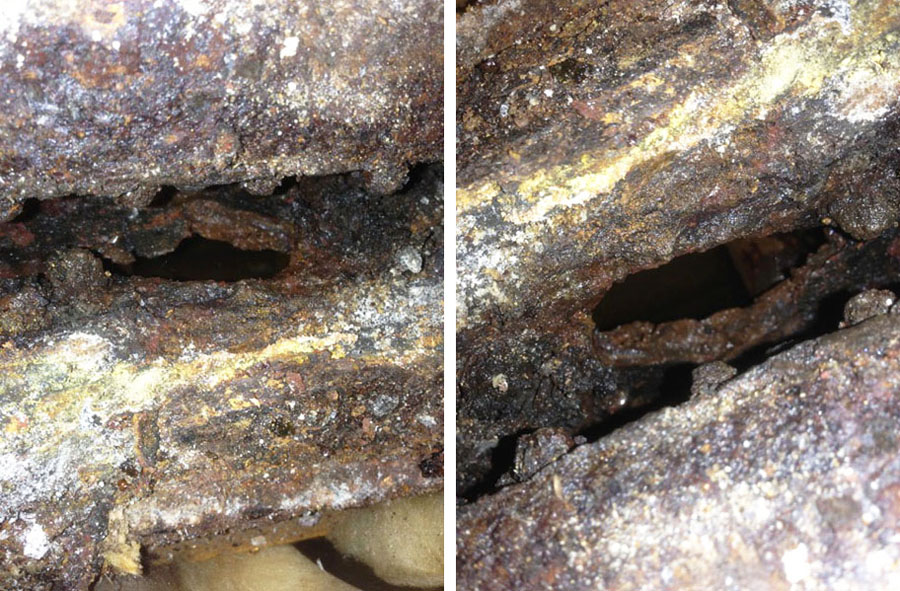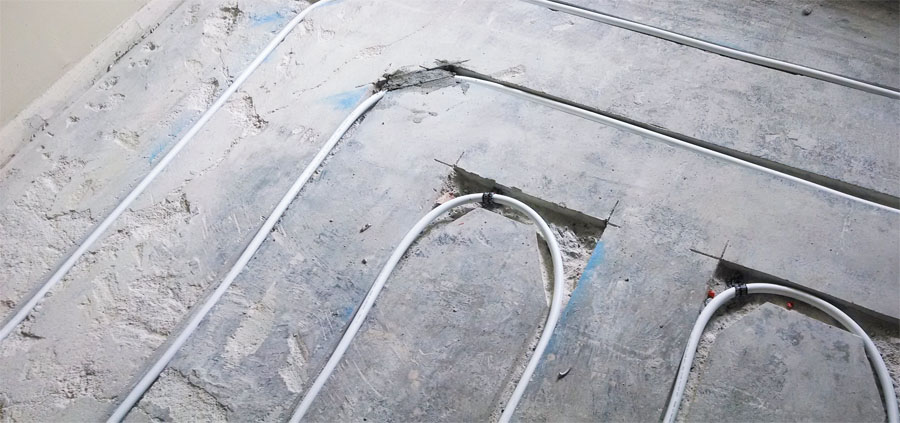House of Questions
 |
 |
|
|
 |
|
|
 |
|
|
 |
|
|
Interesting question. Ask Eichler owners what they love most about their homes, and one of the first things they always mention is the comfort and joy of their radiant-heating system. The toasty floors and natural, evenly circulated room warmth are much preferred over the (ugh!) forced-air and convection systems more common to American homes.
But what happens when radiant-heat pipes leak? During that process, it's not uncommon for a radiant-heat technician to field either of these two complaints from a homeowner: the radiant system is not heating the home properly, or water bills have risen dramatically. Frequently this means leaking radiant pipes are at the heart of the problem.
We posed 'steel vs. copper' pipe questions to two Bay Area radiant-heat technicians who work closely with Eichler homes—Robert Horky of RH Hydronics, and Paul Gerrard of Big Blue Hydronics. Neither of them sees a bright future for Eichler homeowners who own original steel systems, originally very common in Eichlers and, for those still in operation today, 50 or more years old.
What's the bad news about leaks in our steel radiant pipes?
Gerrard: "The number of leaks a homeowner has had in a steel system determines whether it's worth saving [with repairs]."
Horky: "I have a little rule. If I have more than five repairs in a system, I recommend they abandon it."
Horky: "There's no real way of connecting to steel pipe [for patching leaks]. They all leak, [eventually] every one. They never should have been installed in the first place, but they couldn't get copper back then [because of the Korean War]."
And what about copper systems?
Gerrard: "The copper system is easier to fix, though we've not found a good solution for the steel."
Horky: "If it's just a little leak [in a copper system], you're probably not going to notice it...We have an imprint camera, which can pretty much tell if there are leaks."
Horky: "If it's just a pinhole leak, we can fix it. It's [usually] about a four-hour to five-hour repair."
Gerrard: "Typically, if there is a major leak, you see that immediately."
Horky: "Basically, the copper's repairable, the steel is not. If you have one leak in a steel system, the whole thing becomes paper-thin and it becomes difficult to repair."
Diagnosis of a failing radiant system, our two pros say, is fairly quick and reliable, but a homeowner might not like the prognosis any more than the symptoms. It's then that hard choices must be made. But is it worth it to replace a defunct in-floor steel (or copper) radiant system with a new in-floor one?
Gerrard: "That's a real 'move out' kind of job, but to restore your Eichler to its original glory—or even better—it's worth it."
Horky: "[With a PEX-tubing replacement system] we can come in with way less temperature and be much more efficient."
Smart safeguard: Get your radiant-heat system inspected every one to two years. A passing grade on a pressure test for your piping system—either steel or copper—will allow you to breathe easy. Routine inspections will also "prolong the life of your radiant boiler," says RH Hydronics' Robert Horky.




